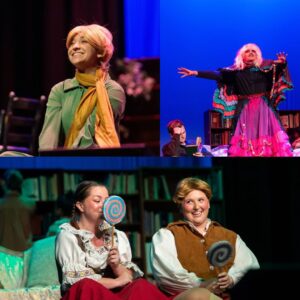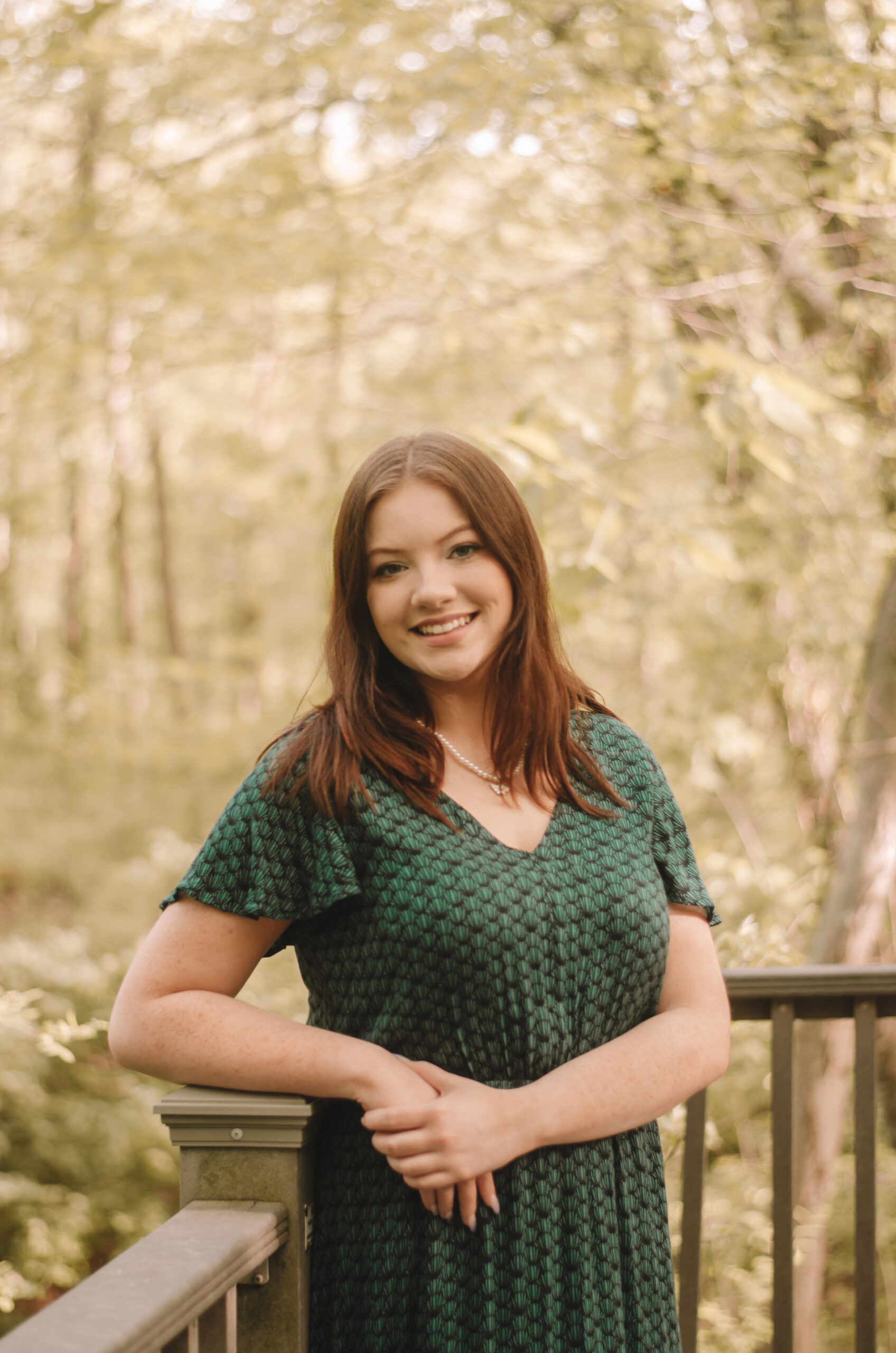From Page to Stage: Literary Characters in Belmont’s Opera Scenes
On Monday November 4th, Belmont University performed their Opera Scenes production in the Massey Concert Hall. It centered around six scenes all from operas based on stories or books. Before the show, director Dr. Savanna Sokolnicki explained the hard work and incredible talent of the students. She also shared the tricky aspects of creating an opera scenes program with the selection of music including vocal accessibility for collegiate students and the best music in opera being represented. Dr. Sokolnicki and music director Daniel Krenz accomplished this very well. The production combined the classic stories we grew up with, the lessons we can gather from them, and the great parts of opera.
The show opened with two students in a library browsing books on two large bookcases (graciously donated to the University by Habitat for Humanity). They began chatting about their favorite stories growing up and took turns choosing books. Each time they opened a book, the scene from that opera began signifying how we are seeing the story play out as they are reading it. I enjoyed how this played with the fourth wall mixing fantasy with real life.
The first story was derived from a novella by Rudolf Těsnohlídek called “The Cunning Little Vixen.” It was adapted into an opera by the Czech composer Leoš Janáček (1854-1928). A young vixen named Sharp-Ears, played by Paige Padgett, entered with an ornate, red fox costume and eye mask provided by Lissa McHugh of BRAVO Theatre. She met a young fox named Gold-Stripe in matching attire, played by Grace Homer, and they fell in love. The chemistry was great between the two, but the highlight of this scene was the music itself. Along with all the text being sung in Czech, there were very complex rhythms and overlapping parts between the two vocal lines. Pianist Laura Benavides acted as a one-woman orchestra with a highly active piano part that she masterfully played. The charming scene continued with the ensemble coming out as many different animals portraying animal life as the two foxes get married. The whole cast posed for a cute animal family photo to end the scene.
The next book read also involved a fox, but this story was the 1943 novella “The Little Prince” by Antoine de Saint-Exupéry, which was adapted into an opera by Rachel Portman (b. 1960). This scene opens with mischievous piano accompaniment as a group of uncoordinated hunters in safari gear march out in a Rockettes-style line. In this scene, the hunters are attempting to catch a wild fox, played by Claire Tole, but are unsuccessful. This chase sequence felt like a classic Tom and Jerry episode as the hunters fail to catch the fox. The comedic timing and choreography were very charming with the hunters using binoculars to look up in the sky as the fox runs right in front of them. The scene then moves to a young prince, played by Jiana Kevilus, meeting the same wild fox. The fox is enamored by the boy asking if he will tame him because he wants to be a special fox. Jiana’s lovely, bright voice paired with the charismatic, funny interpretation of the fox created a great sense of friendship and love between the two. Along with some impressive coordination and hopscotch choreography, this scene was endearing and reminded us of why we love classic children’s stories.
The transition to the third scene included a new friend walking into the library as the two girls are gabbing about “Little Women” written by Louisa May Alcott. He then proceeds to chime in confusing “Little Women” with “Honey I Shrunk the Kids” in a hilarious exchange between the three. As the dialogue ends, the music for the opera written by Mark Adamo (b. 1962) begins. The four sisters Amy, Jo, Beth, and Meg, played by Izzy Kohler, Angela Stenzel, Megan Calgaro, and Val Haas respectfully, all enter in Civil War era costumes along with Laurie, played by Chase Lowery (who we will see more of later). The scene centers around the sisters making a game out of folding laundry with the slowest person having to answer three personal questions. The modern music itself had very complex four-part harmony with the piano hardly helping the singers. The musicianship was great, especially with the intricate acapella section where the voices truly shined. Angela Stenzel was a standout in this number as Jo with her warm, rich mezzo register leading the sisters.
The next scene that was chosen is one of the most famous scenes in opera history. It is from “Carmen,” originally an 1845 novella by Prosper Mérimée, but made famous by Georges Bizet (1838-1875) and his iconic opera. The scene chosen was the tarot card scene where Roma gypsy Carmen, played by Kat Witkowski, and her two friends Frasquita and Mercedes, played by Anna Cannito and Bridgett Baker, drew tarot cards to see their future. Frasquita and Mercedes saw great futures with love and wealth represented by the joyful, bouncy melodies sung by the two. Carmen, in a gorgeous red Spanish dress, drew death every time as her fate. The sultriness of Carmen’s voice complemented by the active soprano lines of Frasquita and Mercedes made this scene one of the high points of the whole night.
My favorite scene from the night was the selection from Gounod’s “Roméo et Juliette” (1818-1893) based on the Shakespeare play. Benavides opened with a fast, intricate Chopin-like passage as Frere Laurent, Romeo, and Juliette entered on stage played by Skylar Peterson, Javi Castro, and Abby Orr respectively. Frere Laurent married the two young lovers in secrecy as Juliette’s maid Gertrude, played by Claire Tole, stood guard in the church. Javi Castro as Romeo and Abby Orr as Juliette were so incredible to watch. Romeo’s warm tenor voice complemented Juliette’s bell-like tone and created a beautiful blend that truly felt like two becoming one. Their stage presence and chemistry together combined with Benavides’ playing and Krenz’s conducting made this the highlight of the night.
The last two scenes in the show had one common theme interpreted in different ways: witches. The first scene was an adaptation from Shakespeare’s play “Macbeth” by Giuseppe Verdi (1813-1901). The three witches that embody fate and manipulation are played by the female ensemble. The witches enter, moving as one mind and body, dressed head to toe in black with different colored head wraps. The creepy melodies combined with the spooky accompaniment was hypnotizing. Bloody props were thrown into a cauldron while the witches performed synchronized arm movements making this scene both musically and visually incredible.
The last scene took us back to the theme of childhood stories with “Hansel and Gretel” by the Brothers Grimm adapted into an opera by Engelbert Humperdinck (1854-1921). Hansel and Gretel, played by Angela Stenzel and Paige Padgett, first stumbled upon the Witch’s candy-covered house and began to stuff their faces. The comedic timing in this scene was great, especially when the Witch appeared for the first time. Chase Lowery, who played Laurie in the “Little Women” scene, played the Witch as a tenor role and completely stole the scene. He emerged in a sequin-covered two-piece with a bright pink skirt, a white wig, and glittery makeup. His presence was terrifying, but I could not keep my eyes off of him. At the end of the piece, the readers in the library walked out and one picked up a cartoon-sized lollipop, signifying how reality and fantasy are now blurred.
Overall, Belmont University’s School of Music put on a terrific production with so many talented students. The repertoire chosen complemented the vocalists, and it was so much fun to watch. Nowadays, it is more important than ever to have something that makes you escape reality for a bit, and that is exactly what this production accomplished.



